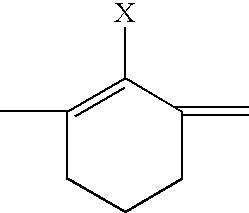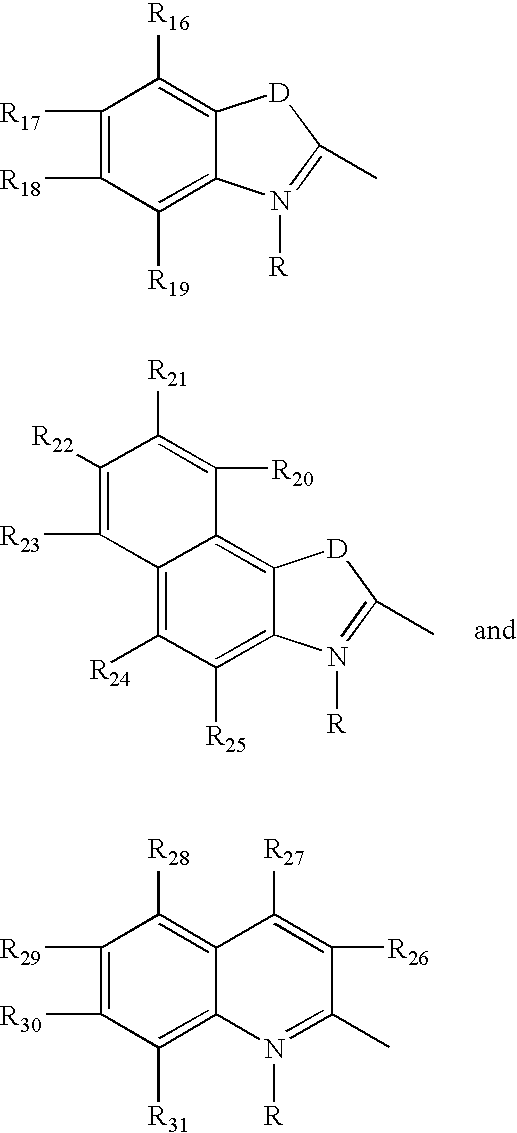Fluorescent membrane intercalating probes and methods for their use
a fluorescence membrane and probe technology, applied in the field of fluorescence and membrane intercalating compounds, can solve the problems of difficult selection of more than three or four visible emitting fluorochromes attachable to cells, inability to study cellular interactions and responses in vivo, and inability to select dyes that are unsuitable for optical imaging in intact animals
- Summary
- Abstract
- Description
- Claims
- Application Information
AI Technical Summary
Benefits of technology
Problems solved by technology
Method used
Image
Examples
example 1
Synthesis of Unsubstituted FR Cyanine Dyes F279A, F280A, F283A, F284A, F285A, F299A, F300A with Approximately 665 nm Emissions
[0066]These membrane probes with the above-referenced emissions were prepared using the same generic synthetic scheme and reaction conditions as described below using the appropriate alkyl iodide or alkyl 4-chlorobenzene sulfonate ester or unsaturated alkyl 4-chlorobenzene sulfonate ester to provide the required hydrocarbon tail length.
[0067]
[0068]Preparation of 1-tetradecyl-2,3,3-trimethylindolinium Iodide (compound 5) was carried out according to the following protocol. Tetradecyl-1-(4-chlorobenzenesulfonate): To a stirred solution of tetradecanol (26.3 g, 0.123 mol, Aldrich Chemical Co., Milwaukee, Wis.) and 4-chlorobenzenesulphonyl chloride (28.48 g, 0.123 mol, Aldrich) in dichloromethane (500 ml) at room temperature is added triethylamine (28 ml, Aldrich) in dichloromethane (200 ml) dropwise. The resulting solution is stirred for 48 hours. The reaction m...
example 2
Synthesis of FR Probe F288A
[0075]This compound is prepared as shown in Scheme 1 above using similar types of reactions and conditions but using 5-tert-butyl-2,3,3-trimethyl(3H)indolenine as the starting material.
example 3
Synthesis of FR Probe F289A
[0076]a. This compound is prepared as shown in Scheme 1 above using similar types of reactions and conditions but using 5-bromo-2,3,3-trimethyl(3H)indolenine as the starting material.
PUM
| Property | Measurement | Unit |
|---|---|---|
| wavelength | aaaaa | aaaaa |
| depth | aaaaa | aaaaa |
| depth | aaaaa | aaaaa |
Abstract
Description
Claims
Application Information
 Login to View More
Login to View More - R&D
- Intellectual Property
- Life Sciences
- Materials
- Tech Scout
- Unparalleled Data Quality
- Higher Quality Content
- 60% Fewer Hallucinations
Browse by: Latest US Patents, China's latest patents, Technical Efficacy Thesaurus, Application Domain, Technology Topic, Popular Technical Reports.
© 2025 PatSnap. All rights reserved.Legal|Privacy policy|Modern Slavery Act Transparency Statement|Sitemap|About US| Contact US: help@patsnap.com



